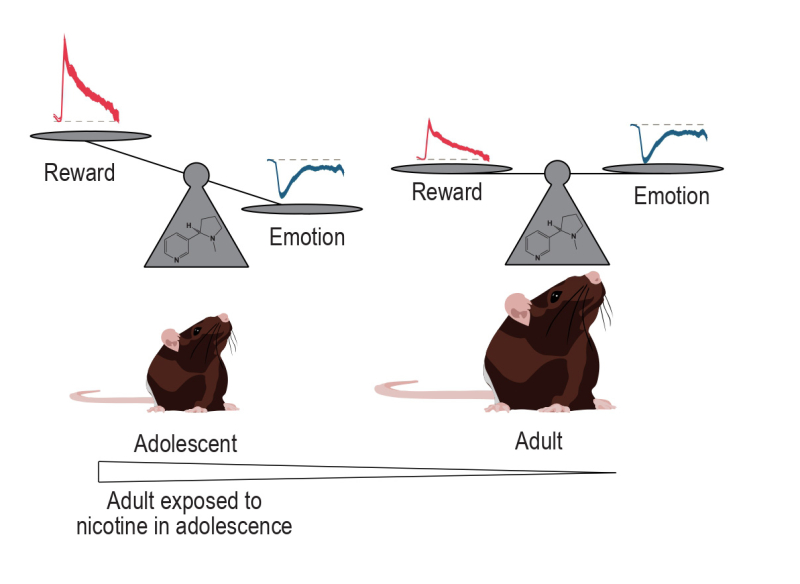Follow us on Google News (click on ☆)

Nicotine exposure during adolescence has long been associated with an increased risk of addiction to this drug in adulthood. However, the precise mechanisms by which nicotine disrupts brain development and promotes this addiction risk remain poorly understood. The study, published in the journal Nature Communications, sheds new light on this question.
Adolescent mice exposed to nicotine show prolonged vulnerability to nicotine
Scientists first observed that adolescent mice had increased sensitivity to the rewarding effects of nicotine, both physiologically and behaviorally. They then showed that mice exposed to nicotine in early adolescence displayed, once they became adults, behaviors and physiological responses similar to those observed in young adolescent mice.
In other words, exposure to nicotine during adolescence appeared to freeze these animals in a prolonged state of vulnerability, characterized by heightened sensitivity to nicotine's rewarding effects and a reduction in their responses to the substance's anxiety-inducing effects.
This phenomenon is linked to a disruption in reward-management circuits
The scientists established that this phenomenon was linked to a disruption of circuits synthesizing dopamine, a key neurotransmitter in reward management.
More specifically, nicotine affects two groups of dopaminergic neurons differently depending on their projections: neurons projecting to the nucleus accumbens, a central brain region involved in reinforcement and motivation, were particularly affected in adolescent mice, but also in the adults who had consumed nicotine during adolescence.
Conversely, neurons projecting to the amygdala, a region that plays a role in the management of emotions and fear, did not exhibit comparable disruptions.
These results suggest that exposure to nicotine during this critical developmental period durably imbalances dopaminergic circuits, thus maintaining individuals in an immature brain state and making them more likely to develop addiction in adulthood.
By restoring the balance of this dopaminergic neuronal activity, scientists were able to reinstate normal behavior in adult mice that had been exposed to nicotine during adolescence, demonstrating that targeted interventions aimed at restoring reward circuit activity can reduce an acquired vulnerability to the drug.

Adolescent mice show increased sensitivity to nicotine's rewarding effects, while negative emotional effects are less pronounced. Dopaminergic neurons projecting to the nucleus accumbens, a key region in regulating reward and motivation, display an amplified response to nicotine in adolescents compared to adults. © Lauren Reynolds
In contrast, neurons projecting to the amygdala (in blue), involved in emotion and fear management, do not undergo notable changes. Nicotine exposure during adolescence maintains this neuronal imbalance in adults, thus prolonging the state of vulnerability to addiction.
References:
Reynolds, L.M., Gulmez, A., Fayad, S.L. et al.
Transient nicotine exposure in early adolescent male mice freezes their dopamine circuits in an immature state.
Nat Commun 15, 9017 (2024). https://doi.org/10.1038/s41467-024-53327-w